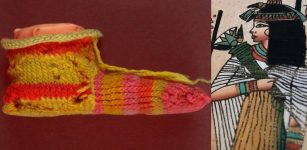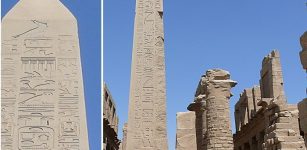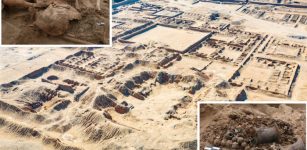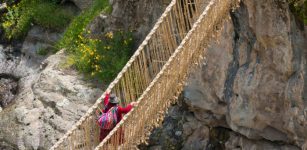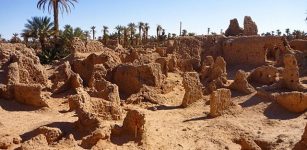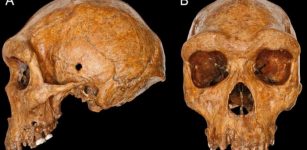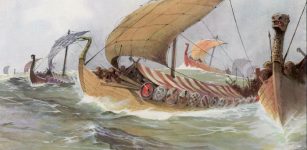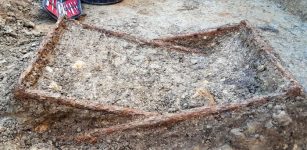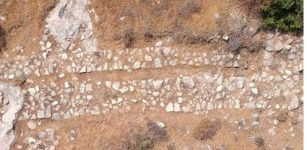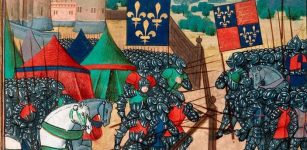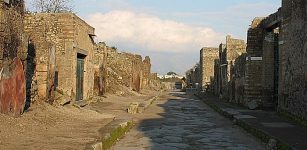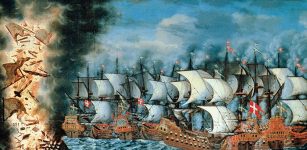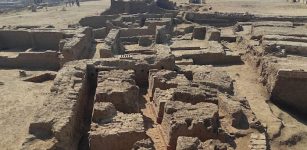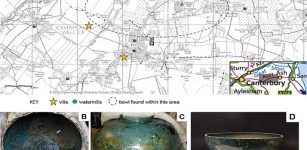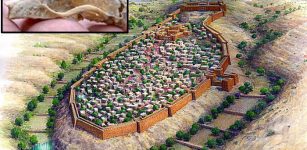South African Rock Art May Be Inspired By Long-Extinct Species
Conny Waters - AncientPages.com - A mysterious tusked animal in South African rock art may depict an ancient species preserved as fossils in the same region, according to Julien Benoit of the University of the Witwatersrand.
The Horned Serpent panel. A, general view of the Horned Serpent panel photographed in 2024 by the author. B, close up of the section figured in Stow and Bleek’s [13] plate 39. C, close up of the tusked animal. D, close up of the warriors painted below the Horned Serpent panel. E, close up of the warriors painted to the right of the panel. Image credit: University of the Witwatersrand.
The Horned Serpent panel is a notable section of rock wall that showcases artwork depicting animals and various cultural elements linked to the San people of South Africa.
This artwork was originally painted between the years 1821 and 1835, offering valuable insights into the heritage and artistic expression of the San community during that period.
The tusked animal of the Horned Serpent panel compared to the skull of a dicynodont. A, the tusked animal of the Horned Serpent panel redrawn from Stow and Bleek. Image source - University of the Witwatersrand.
Among the painted figures is a long-bodied animal with downward-turned tusks which doesn't match any known modern species in the area.
As the San people are known to have included various aspects of their surroundings into art, including fossils, Benoit suggests the tusked creature might have been inspired by an extinct species.
The Karoo Basin of South Africa is renowned for its rich deposits of well-preserved fossils.
Painting of the dicynodont made by the San in the early 1800s. Credit: Julien Benoit, CC-BY 4.0
Among these, the tusked animals known as dicynodonts are particularly notable and are frequently discovered eroding from the ground. This region provides valuable insights into prehistoric life and contributes significantly to our understanding of ancient ecosystems.
Benoit revisited the Horned Serpent panel and found the tusked figure comparable with dicynodont fossils, an interpretation that is also supported by San myths of large animals that once roamed the region but are now extinct.
The tusked animal of the Horned Serpent panel compared to the skull of a dicynodont. B, skull of a Diictodon feliceps (BP/1/8140, Jasfontein, Victoria West District) photographed by the author in situ at the moment of its discovery, before excavation, and unprepared. Image source - University of the Witwatersrand.
If the tusked figure is in fact an artistic interpretation of a dicynodont, a species which went extinct before dinosaurs appeared and were long extinct when humans appeared in Africa, it would predate the first scientific description of these ancient animals by at least ten years.
There is archaeological evidence that the San people might have collected fossils and incorporated them into their artwork, but the extent of indigenous knowledge of paleontology is poorly understood across Africa.
Further research into indigenous cultures might shed more light on how humans around the world have incorporated fossils into their culture.
According to Julien Benoit, "the painting was made in 1835 at the latest, which means this dicynodont was depicted at least ten years before the western scientific discovery and naming of the first dicynodont by Richard Owen in 1845.
This work supports that the first inhabitants of southern Africa, the San hunter-gatherers, discovered fossils, interpreted them and integrated them in their rock art and belief system."
Source - PLOS
Julien Benoit. A possible later stone age painting of a dicynodont (Synapsida) from the South African Karoo. PLOS ONE, 2024; 19 (9): e0309908 DOI: 10.1371/journal.pone.0309908
Written by Conny Waters - AncientPages.com Staff Writer






